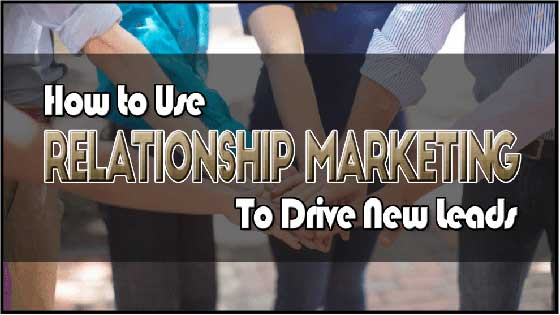The purpose of relationship marketing is not to land a transaction, but to build long-term customer loyalty and engagement. Client relationship marketing (CRM) has been shown to drive new leads at a higher rate than traditional efforts, according to Keli Bennet, Consumer Marketing Director at Abbot Laboratories in Illinois. Building relationships typically takes the form of regular two-way, permission-based communication designed to achieve dialog with the client. Here’s how to use relationship marketing & put it to work for your company.
Building Credibility
Before you can expect prospective customers to be at all interested in establishing a relationship with your company, you’ll need to build up credibility and trust. Become a “center of influence” for your industry by developing your personal profile as a business and thought leader. Some of the ways you can do this are:
- Maintain visibility through public commentary, press releases, and statements.
- Develop a social media presence that shines a light on others, engages followers in real conversations and works to make a difference to your audience.
- Host industry events and be present and visible at them.
Your reputation also depends on your consistency, quality product and customer service, so make sure these aspects of your business are sound.
Using Data to “Be There” for Customers
It’s vital for you to be available to your customer when he (or she) needs you. By using data to segment your target audience, you’re able to identify your prospects at each stage in the buying cycle. There’s little point, for example, in sending out a communication exhorting your prospect to “buy now” if he’s only at the information-gathering point in his cycle.
To develop a strong, emotional connection with your client you need to know what he wants, when he wants it and how he wants it. The use of big data for CRM makes this possible, and by analyzing the way prospects use your website and content you can gather a significant amount of information about them.
Focusing on Engagement
One-way communications no longer cut it. That’s why inbound marketing has become such a dynamic practice in today’s business environment. Engage your clients through regular contact, communications, automated lead nurturing and feedback opportunities. Some ways to do this include:
Engaging through social media: Set up hashtags to identify what your followers are talking about, according to Andrew Presault of HootSuite. He believes you should ask questions to get conversations going, use negative feedback as an opportunity to engage with the client and showcases your customer service excellence, and promote the content of others to create “community.”
Automating your communications: It’s really difficult to find time to build and manage client relationships personally. The good news is that you can get sophisticated CRM software that does much of it on your behalf. It enables you to:
- store all the information you have about prospects
- segment them into target groups based on their previous interactions with your company or their interests and preferences
- trigger automatic communications based on certain actions they take, such as visiting a particular page on your website
- send regular “drip” emails to help them keep your company top of mind
Using feedback to your advantage: It’s essential to take notice of what your customers want, according to Ariel Finkelstein, CEO and co-founder of Kampyle Feedback Analytics. Relationship marketing provides multiple opportunities to gather feedback. When this is added to your customer database, it accumulates over time to provide knowledge you can use to identify patterns and inform protocols.
Educating the Audience
Nothing builds relationships as much as providing information of value does. Education is a powerful marketing strategy, says Joe Pulizzi, CEO of the Content Marketing Institute. He suggests that you educate your audience by creating an online repository of content that they can access for anything pertaining to your industry, product or service.
If you can become the “go-to” source for all things related to your offering, your customer will begin to view you as an expert in your field, a reliable avenue for information and a helpful resource. Once that relationship is established, you’ll not only have data identifying the prospect but intel that shows his needs and wants, his stage in the buying cycle and his preferred channels of communication.
Improving Customer Retention
Once you have succeeded in establishing a relationship with the client, it’s important to find ways to keep him satisfied. Apart from the obvious need to deliver quality customer service, you can use CRM tactics to reward and recognize longevity. Some ways to do this include loyalty programs, special promotions, referral incentives, and rewards. These create a sense of a two-way, reciprocal relationship, builds customer allegiance and makes you the client’s first choice provider in all circumstances. And that’s the very best way to drive new leads.











